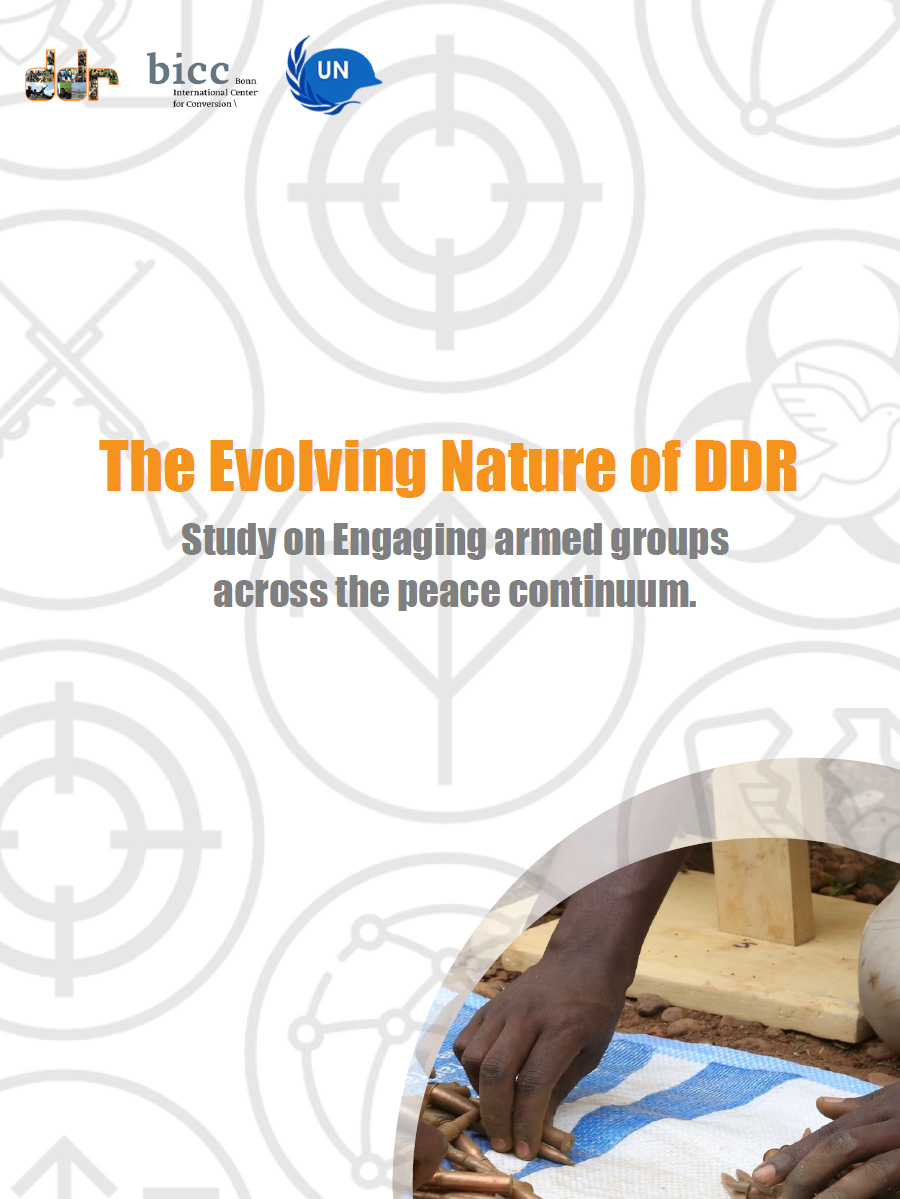
The absence of comprehensive peace agreements; the fragility of existing peace agreements; the increase in violence by non-state actors and the prevalence of localized conflict; the designation of armed groups as terrorist organizations; the continued fragmentation and multiplication of armed groups; the rise of transnational armed violence and criminal networks, as well as the impact of climate change, epidemics and pandemics in conflict settings: these are all key features in almost all the contexts in which DDR now takes place. The constantly evolving nature of conflicts has pushed DDR practice to evolve in lockstep. Along the way, new approaches, new tools, new ways of working but also new risks have emerged from these global trends that further complicate how the United Nations supports peace processes and member states to meet the needs of ex-combatants, their dependents, and the communities into which they reintegrate. This study represents an important effort in capturing these lessons in a manner that will be useful to policy makers and practitioners alike. In doing so, the study will contribute to a better understanding on how to operationalize the recently launched Integrated DDR Standards (IDDRS), which now cover peace operations and non-mission settings. Some of the recommendations captured in this study go beyond DDR and will be useful in shaping the next phase of implementation of the Secretary General’s A4P initiative, across key commitments such as those around politics, women, peace and security, peacebuilding and sustaining peace. Additionally, the study could also contribute to the ongoing discussions on the future of peace operations.
